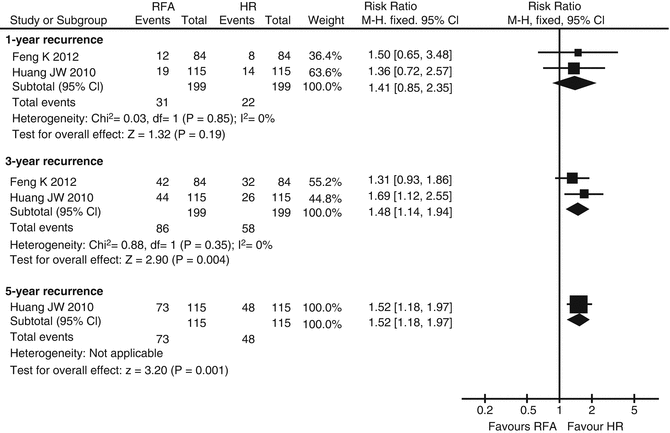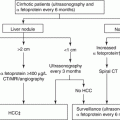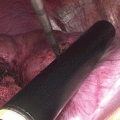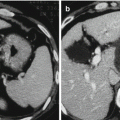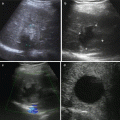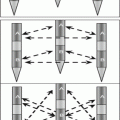Fig. 11.1
Overall survival (OS) at 1, 3 and 5 years in RCTs (Reprint from Yingqiang Wang et al. [5])
Recurrence-Free Survival
Again, the RCTs showed no significant difference in recurrence-free survival rates at 1 and 3 years; however, the 5-year survival rate in the HR group was significantly better at 5 years.
The NRCTs demonstrated better survival rates at 1, 3 and 5 years in the HR group, although there was no significant difference between groups of 5-year recurrence-free survival rates for patients with Child-Pugh class A (Fig. 11.2).
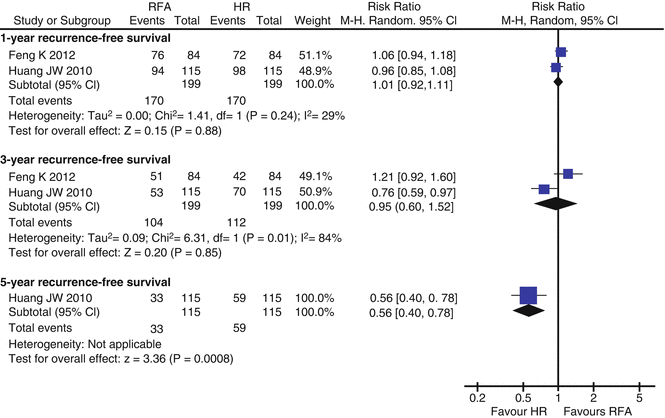

Fig. 11.2
Recurrence-free survival rate (RFS) at 1, 3 and 5 years in RCTs (Reprint from Yingqiang Wang et al. [5])
Disease-Free Survival
The disease-free survival rate was only reported in one RCT, which demonstrated no difference between the two groups.
The pooled meta-analysis of the NRCTs showed significantly higher disease-free survival rates in the HR group at 1, 3 and 5 years.
Recurrence
The pooled results of the RCTs showed no significant difference at 1 year in recurrence rates (either local or distant), between the two groups. However, at 3 and 5 years, recurrence rates were significantly higher in the RFA group.
The meta-analysis of the NRCTs showed higher recurrence rates at 1, 3 and 5 years in the RFA group overall, although there were no significant differences between groups for patients with Child-Pugh Class A (Fig. 11.3).
In-Hospital Mortality, Complication Rate and Length of Hospital Stay
There were no significant differences in either the RCTs or the NRCTs regarding in-hospital mortality. The complication rate was lower in the RFA group, as evidenced by both RCTs and NRCTs. Length of hospital stay was 8.77 days shorter in the RCTs and 6.74 days fewer in the NRCTs (Fig. 11.4).
Tumour Size 3–5 cm
Pooled results from the RCTs showed no significant difference of overall survival rates between the two groups for single HCC patients with this tumour size. NRCTs showed no difference at 1 and 3 years, although the 5-year survival rate in the HR group was higher. The 1, 3 and 5 year disease-free survival rates in the HR group were higher than the RFA group.
Solitary Tumour <2 cm
Of the three RCTs, none specifically analysed the outcomes of these tumours; however, four observational retrospective studies did so. None of these reported a convincing comparison between the two treatment arms, with the most frequent differences observed in RFA patients that were older, had a lower platelet count, more frequently were Child-Pugh class B and were more affected by smaller tumours (P <0.050). Therefore, the results in terms of both patient survival and recurrence rates are biased by covariate distribution.
Stay updated, free articles. Join our Telegram channel

Full access? Get Clinical Tree


